Rewilding Harvard
Rewilding Harvard is one, two, three things—combined!
One: it joins many initiatives around the world to return places to earlier stages of biodiversity, with benefits to the environment, including the support of pollinators. Two: it’s a series of ongoing classes designed by Professor Joyce Chaplin (History) in which students learn about rewilding and about working together on projects. Three: it’s an actual exhibit, a planter in front of Harvard Museum of Natural History, which the students helped to design.
Rewilding Harvard Plant Selection

Common Ninebark
Physocarpus opulifolius, known as common ninebark, Eastern ninebark, Atlantic ninebark, or simply ninebark, is a species of flowering plant in the rose family Rosaceae, native to eastern North America.
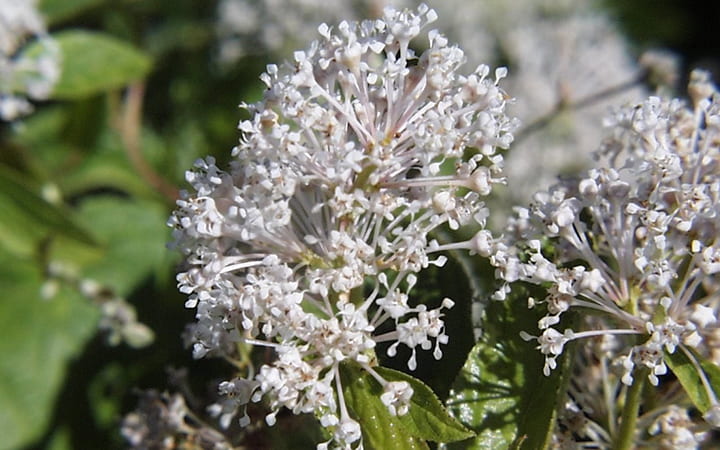
New Jersey Tea
Ceanothus americanus is a species of Ceanothus shrub native to North America. Common names include New Jersey tea, Jersey tea ceanothus, variations of red root (red-root; redroot), mountain sweet (mountain-sweet; mountainsweet), and wild snowball. New Jersey tea was a name coined during the American Revolution, because its leaves were used as a substitute for imported tea.

Button Blazing Star
Liatris aspera (known as rough, button, lacerate, or tall prairie blazing star or gayfeather) is a wildflower that is found in the mid to eastern United States in habitats that range from mesic to dry prairie and dry savanna. It grows 30 to 180 cm (1 to 6 feet) high. The inflorescence is an erect raceme with numerous, purple, button-like flower heads, short-stalked or stalkless, blooming from the top down. It flowers from mid-August through September, with seed becoming ripe in October to November. It can be purchased from specialty suppliers. Leaves are alternate, numerous, and narrow along the entire stem. The stem is rough with short stiff hairs, and often the leaves are as well.
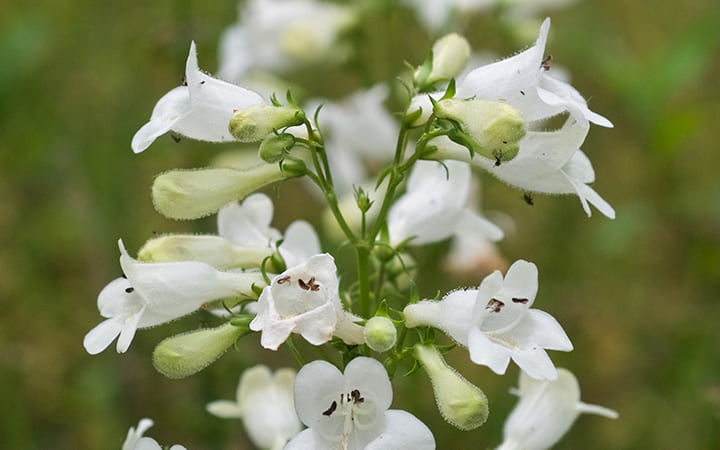
Foxglove Beardtongue
Penstemon digitalis (known by the common names foxglove beard-tongue, foxglove beardtongue, talus slope penstemon, and white beardtongue) is a species of flowering plant in the plantain family, Plantaginaceae. The flowers are white and are borne in summer. It is native to eastern Canada and the eastern and southeastern United States. Penstemon digitalis is the most widespread species of Penstemon east of the Mississippi River.
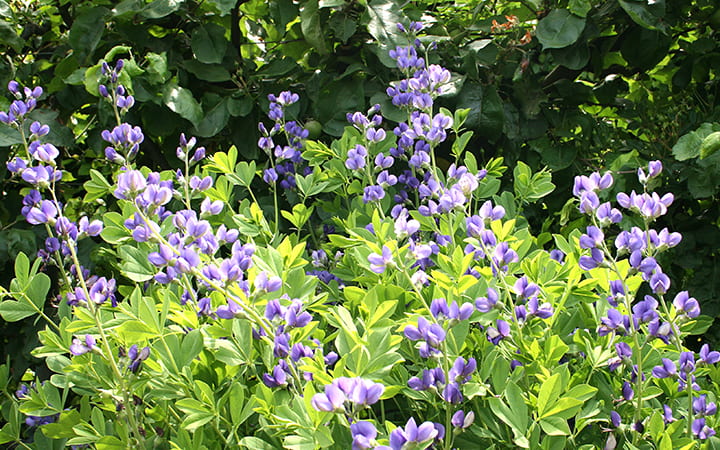
Blue Wild Indigo
Baptisia australis, commonly known as blue wild indigo or blue false indigo, is a flowering plant in the family Fabaceae (legumes). It is native to much of central and eastern North America and is particularly common in the Midwest, but it has also been introduced well beyond its natural range. Naturally it can be found growing wild at the borders of woods, along streams or in open meadows. It often has difficulty seeding itself in its native areas due to parasitic weevils that enter the seed pods, making the number of viable seeds very low. The plant has low toxicity levels for humans.

Little Bluestem Grass
Schizachyrium scoparium, commonly known as little bluestem or beard grass, is a species of North American prairie grass native to most of the contiguous United States (except California, Nevada, and Oregon) as well as a small area north of the Canada–US border and northern Mexico. It is most common in the Midwestern prairies. Little bluestem is a perennial bunchgrass and is prominent in tallgrass prairie, along with big bluestem (Andropogon gerardi), indiangrass (Sorghastrum nutans) and switchgrass (Panicum virgatum). It is a warm-season species, meaning it employs the C4 photosynthetic pathway.

New England Aster
Symphyotrichum novae-angliae (formerly Aster novae-angliae) is a species of flowering plant in the family Asteraceae native to central and eastern North America. Commonly known as New England aster, hairy Michaelmas-daisy, or Michaelmas daisy, it is a perennial, herbaceous plant usually between 3 and 12 decimeters (1 and 4 feet) tall and 6 to 9 dm (2 to 3 ft) wide. The usually deep-purple flowers have up to 100 ray florets which are rarely pink or white. These surround the flower centers which are composed of just as many tiny yellow disk florets. The plant grows naturally in clumps, with several erect stems emerging from a single point. The stems are stout, hairy, and mostly unbranched. The untoothed, lance-shaped leaves clasp the stem with earlobe-like appendages, and the lower stem leaves often wither by the time of flowering. New England aster generally grows in wet environments but also has been found in dry soil or sand. The seeds and nectar of this mostly conservationally secure species, which blooms August to November, are important to a wide variety of animals, including birds, bees, and butterflies. It has been introduced to Europe, Central Asia, Hispaniola, New Zealand, and some western states and provinces of North America. The naturally-occurring hybrid species of New England aster and white heath aster (Symphyotrichum ericoides) is named Symphyotrichum x amethystinum and is commonly known as amethyst aster. It can grow where the two parents are in close proximity. There are roughly 50 cultivars of Symphyotrichum novae-angliae available, including the award-winners ‘Brunswick’, ‘Helen Picton’, and ‘James Ritchie’. It has been used by indigenous Americans, such as the Cherokee, Iroquois, and Potawatomi, to heal multiple ailments.
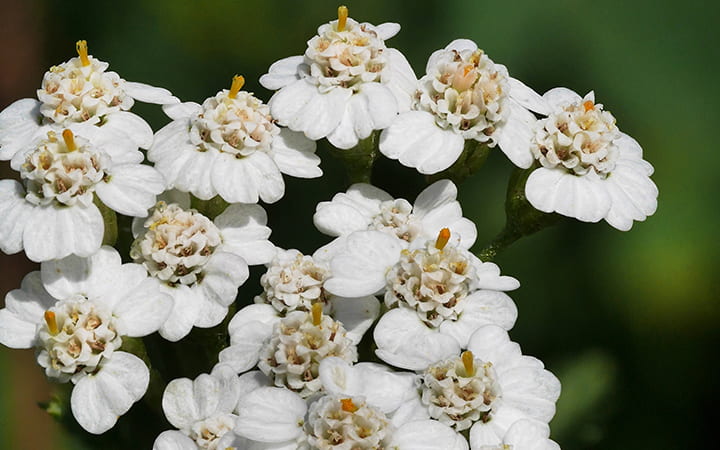
Yarrow
Achillea millefolium, commonly known as yarrow or common yarrow, is a flowering plant in the family Asteraceae. It is native to temperate regions of the Northern Hemisphere in Asia and Europe and North America. It has been introduced as a feed for livestock in New Zealand and Australia, where it is a common weed of both wet and dry areas, such as roadsides, meadows, fields and coastal places. In New Mexico and southern Colorado, it is called plumajillo (Spanish for ‘little feather’) from its leaf shape and texture. In antiquity, yarrow was known as herba militaris, for its use in stanching the flow of blood from wounds. Other common names for this species include gordaldo, nosebleed plant, old man’s pepper, devil’s nettle, sanguinary, milfoil, soldier’s woundwort, thousand-leaf, and thousand-seal.
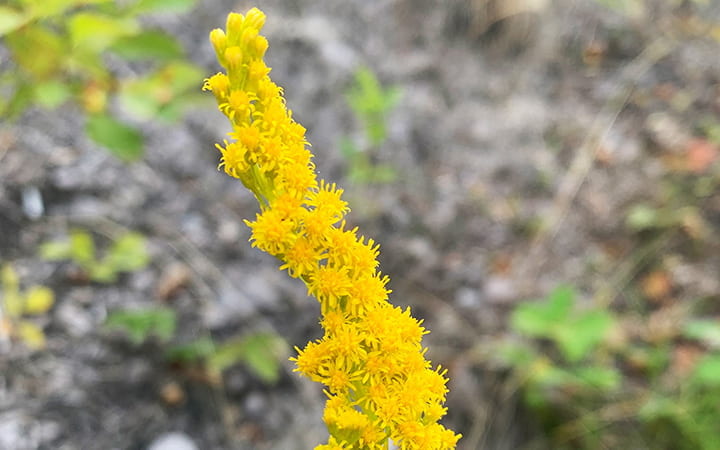
Showy Goldenrod
Solidago erecta is a species of goldenrod known by the common names showy goldenrod and slender goldenrod. It is native to the eastern United States, from Massachusetts west to Indiana, and south as far as Georgia and Mississippi. Solidago erecta is a perennial herb up to 120 cm (4 feet) tall. One plant can produce as many as 350 small yellow flower heads in an elongated array.

Christmas Fern
Polystichum acrostichoides, commonly denominated Christmas fern, is a perennial, evergreen fern native to eastern North America, from Nova Scotia west to Minnesota and south to Florida and eastern Texas. It is one of the most common ferns in eastern North America, being found in moist and shady habitats in woodlands, stream banks and rocky slopes. The common name derives from the evergreen fronds, which are often still green at Christmas.
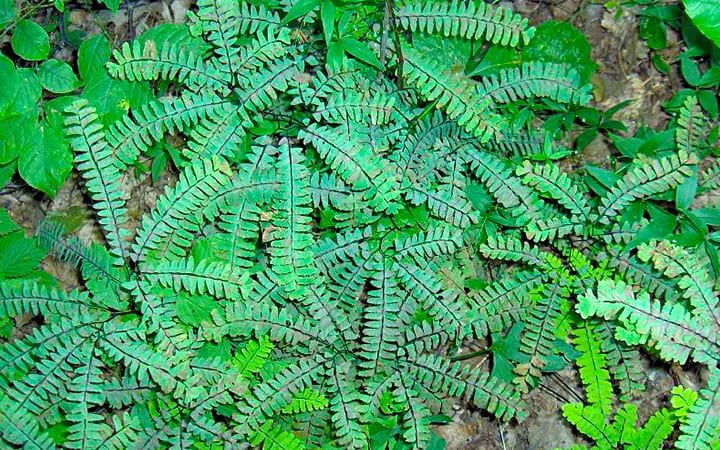
Maiden Hair Fern
Adiantum pedatum, the northern maidenhair fern or five-fingered fern, is a species of fern in the family Pteridaceae, native to moist forests in eastern North America. Like other ferns in the genus, the name maidenhair refers to the slender, shining black stipes.

Indian Grass
Sorghastrum nutans, commonly known as either Indiangrass or yellow Indiangrass, is a North American prairie grass found in the central and eastern United States and Canada, especially in the Great Plains and tallgrass prairies.
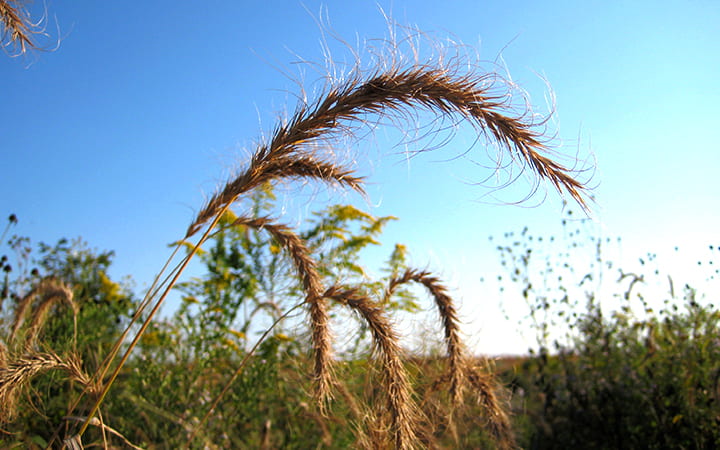
Canadian Wild Rye
Elymus canadensis, commonly known as Canada wild rye or Canadian wildrye, is a species of wild rye native to much of North America. It is most abundant in the central plains and Great Plains. It grows in a number of ecosystems, including woodlands, savannas, dunes, and prairies, sometimes in areas that have been disturbed.
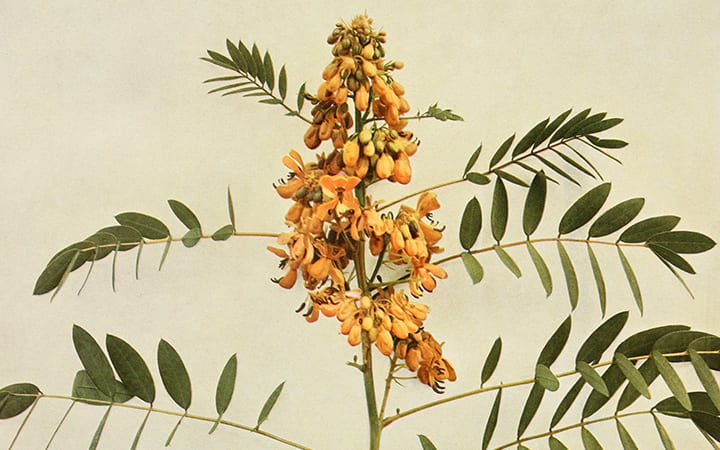
Wild Senna
Senna hebecarpa, with the common names American senna and wild senna, is a species of legume native to eastern North America.
Would you like to enjoy more wildlife in your garden? Rewilding provides essential food and shelter to birds, bees, butterflies, and so many of the other local critters we love. Try it at home with these native plants!
Rewilding Harvard Planter Design Process
Before Rewilding

Office of Physical Resources and Planning Illustration
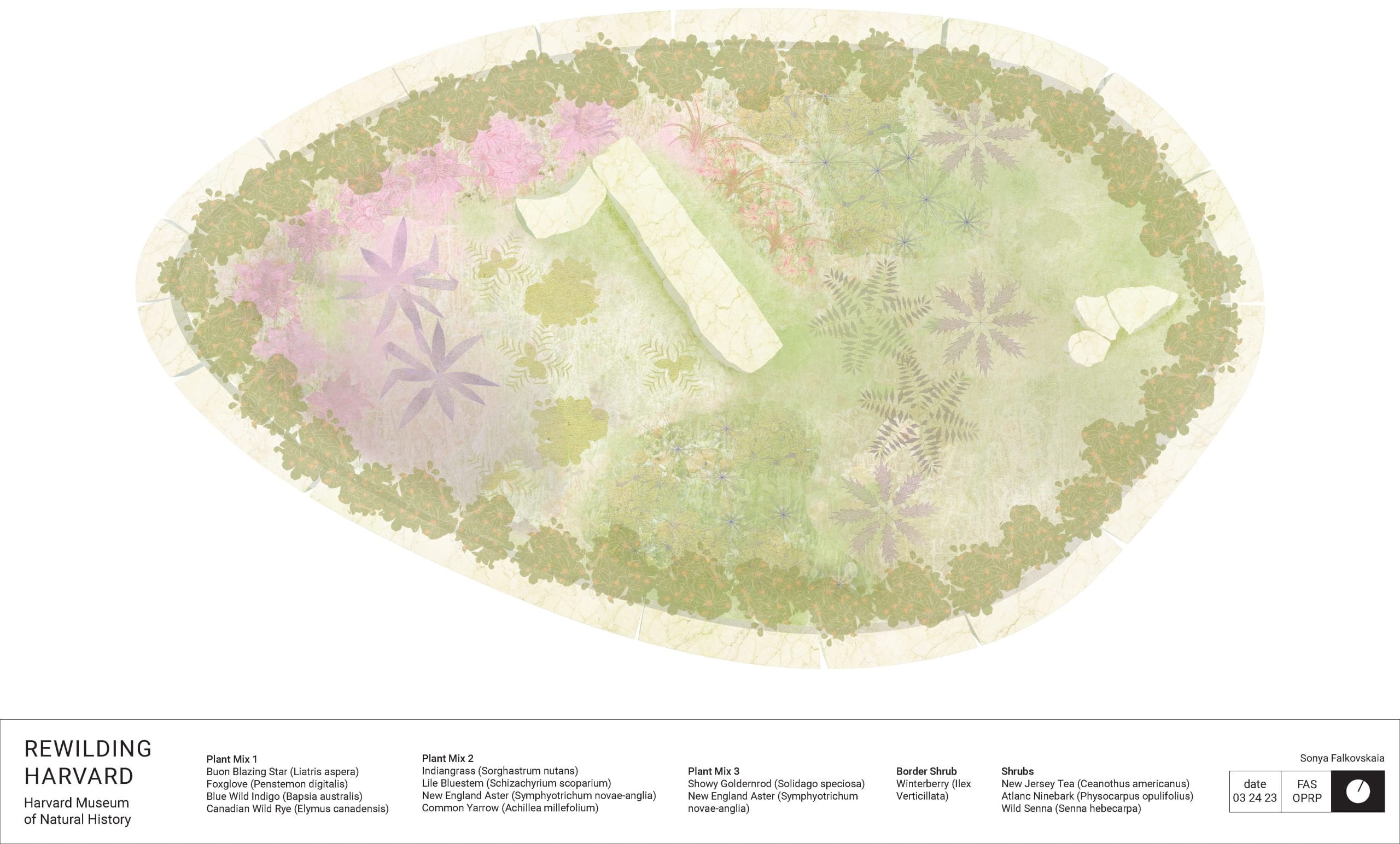
Credit Sonya Falkovskaia, FAS, Office of Physical Resources & Planning
Based on plant list and design by Rebecca Cadenhead, Joyce Chaplin, Katherine Enright, Christina Janulis, David Moreno Mateos, Veronica Peterson, Phoebe Pohl, Kaitlin Pomerantz, Paige Proctor, and Olivia So.
Harvard Campus Landscape Services at Work
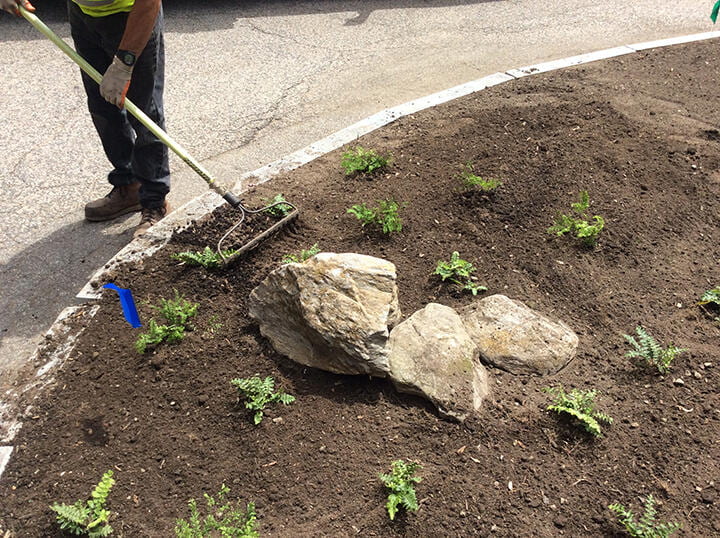
Credit Harvard Campus Landscape Services, FAS OPRP, and Harvard Office of Sustainability